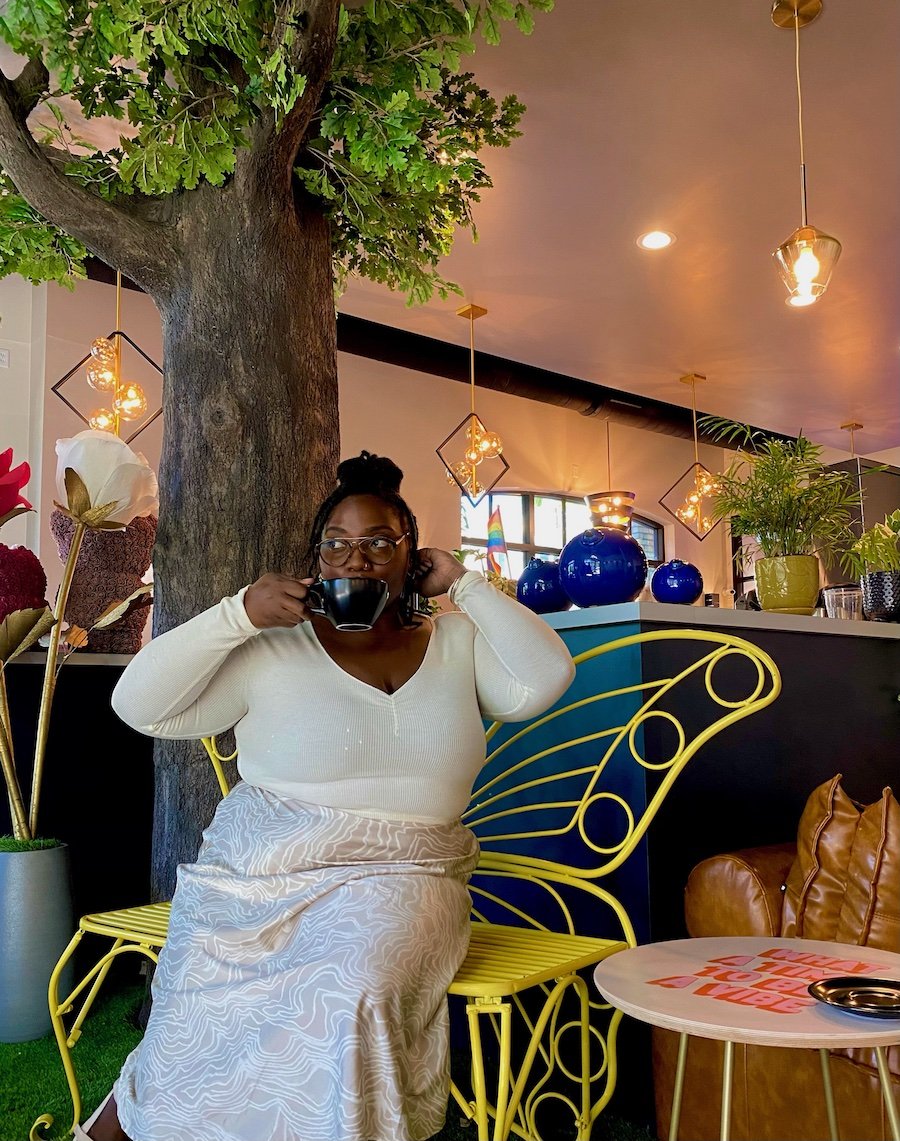Coffee Shops Near You-- Discover the very best Cafes in Your Area
Exactly How to Select the Right Kind Of Coffee for Your Preference Preferences
Choosing the suitable coffee to complement your preference choices requires an enlightened method to both bean ranges and brewing methods. Exploring various brewing methods can enhance these flavors, better individualizing the coffee experience.
Recognizing Coffee Beans
Recognizing coffee beans is essential for any kind of coffee enthusiast looking for to enhance their developing experience. The structure of a great mug of coffee exists in the sort of beans selected, each offering unique flavors and features. Coffee beans typically drop right into two primary classifications: Arabica and Robusta. Cafe Bistro. Arabica beans are understood for their smooth, complicated flavors and fragrant qualities, usually chosen for specialized coffees. They thrive at greater altitudes and are a lot more prone to pests, causing a higher price point.
On the other hand, Robusta beans consist of a greater caffeine content and are characterized by a stronger, extra bitter taste. They are hardier and grow at reduced altitudes, making them more economical and usually made use of in coffee blends for added crema.

Exploring Developing Techniques
Discovering numerous developing approaches is important for opening the complete possibility of selected coffee beans. Each approach uses an unique technique to drawing out structures, scents, and flavors, eventually affecting the general coffee experience. Typical brewing techniques consist of drip, French press, espresso, and pour-over, each with its unique features and needs.
Drip developing is preferred for its convenience and consistency, using a paper or metal filter to separate coffee premises from the made drink. French press, on the various other hand, enables full immersion of coffee grounds, resulting in a rich, durable taste profile. Espresso is a concentrated form of coffee created forcibly warm water with finely-ground coffee, producing a bold shot that functions as the structure for different beverages like coffees and lattes.
Pour-over brewing gives the customer higher control over the extraction procedure, permitting exact modifications in water temperature and circulation rate. This method typically highlights the elaborate flavors of specialized coffee beans. Eventually, the choice of developing technique should straighten with individual preferences and wanted flavor outcomes, establishing the stage for a satisfying coffee experience customized to private preferences.
Identifying Flavor Profiles
Recognizing taste profiles is crucial for valuing the nuances of various coffee varieties. Coffee's taste is influenced by a number of elements, including the origin of the beans, the processing approaches, and the roast degree. Each of these components adds to an intricate spectrum of tastes, which can range from fruity and flower to natural and nutty.
To begin identifying taste accounts, think about the coffee's click over here now beginning. Beans from regions such as Ethiopia often exhibit intense acidity and fruity notes, while those from Colombia may offer a smoother, caramel-like sweet taste. The processing approach likewise plays an essential duty; for example, washed coffees often tend to have cleaner, brighter tastes contrasted to all-natural processed beans, which can exhibit more pronounced fruitiness.
Roast degree further affects the flavor profile. Light roasts generally maintain more of the bean's original features, while dark roasts may present much deeper, smokier flavors. Sampling notes often define these features, utilizing terms like delicious chocolate, citrus, or flavor. Developing a taste for these tastes boosts your coffee experience, enabling you to value the distinct qualities of each selection and inevitably guiding your selection towards the coffee that straightens with your taste choices.
Matching Coffee to Preferences
When it involves matching coffee to individual choices, recognizing individual preference is extremely important, as it permits a more customized coffee experience. Each coffee enthusiast possesses distinct flavor dispositions that can lead their selections, making it vital to comprehend these preferences before selecting a brew.
For those inclined towards sweeter notes, coffee kinds with natural sweet taste, such as Ethiopian Yirgacheffe or Brazilian Santos, might be particularly attractive. Conversely, if a choice leans in the direction of durable and bold flavors, options like Colombian Supremo or Sumatran Mandheling can offer the preferred strength.
In addition, the acidity level plays an essential duty in the coffee choice process. Coffee aficionados that appreciate an intense, tangy taste could prefer light roast coffees, whereas those who favor a smoother, lower-acid experience may select dark roasts. In addition, the selection of brewing approach can substantially influence flavor understanding; for example, coffee tends to focus tastes, while pour-over techniques permit a see here much more nuanced profile.
Eventually, matching coffee to choices involves a mindful consideration of taste accounts, level of acidity, and brewing approaches, ensuring a delightful and rewarding coffee experience tailored to private tastes.
Experimenting With Various Ranges
To truly appreciate the varied globe of coffee, trying out different ranges is essential. Each coffee bean has one-of-a-kind taste accounts affected by aspects such as origin, processing methods, and roast degrees. By exploring different types, you can uncover a range of preferences that may line up very closely with your preferences.
Start your trip by attempting beans from various areas, such as Ethiopian Yirgacheffe with its intense acidity and floral notes, or Colombian Supremo, known for its balanced flavor and mild sweet taste (Coffee Shops). Additionally, take into consideration trying out different processing approaches, such as cleaned versus all-natural, which can substantially modify the last preference
Roast degrees also play an essential duty; light roasts normally preserve the bean's inherent flavors, while dark roasts provide bolder, more look here durable accounts. When trying out, remember on each variety's taste qualities and your overall impact.
Engaging in tastings, whether at neighborhood cafés or with curated membership solutions, can better boost your understanding. Ultimately, accepting a selection of coffee kinds enables you to fine-tune your taste and discover your individual faves within the vast coffee landscape.
Conclusion
Finally, picking the suitable coffee type necessitates an understanding of different beans, brewing approaches, and flavor accounts. By adequately exploring the differences between Arabica and Robusta varieties, together with varied brewing methods, coffee enthusiasts can uncover mixes that line up with individual preference preferences. Testing with different varieties additionally improves the coffee experience, ultimately leading to a much more gratifying and individualized pleasure of this beloved drink. Such a technique cultivates a deeper gratitude for the complexities of coffee.
Comprehending coffee beans is crucial for any kind of coffee fanatic looking for to improve their brewing experience. Recognizing these subtleties enables coffee enthusiasts to pick beans that straighten with their taste preferences, leading the method for a more gratifying and tailored coffee experience.

Creating a taste for these flavors improves your coffee experience, enabling you to value the distinctive qualities of each range and eventually leading your selection toward the coffee that aligns with your taste preferences.
Coffee fanatics that value an intense, tangy taste might favor light roast coffees, whereas those who like a smoother, lower-acid experience might decide for dark roasts.